Ford Adds Strong, Silent 3.0 Diesel to F-150
Pickup trucks are everywhere, just look around., Pickup trucks to the left, pickup trucks to the right, pickup trucks right behind or in front of you. If you love pickup trucks, you’re living in the perfect time. It seems that everything that isn’t an SUV these days is a pickup truck. There are so many to choose from, the difficulty is in choosing. First decide what you need a pickup truck for, and then be prepared for a lengthy term of comparative drives to decide which one is right for you.
As if that is going to happen.
I’m all for such comparison drives, but we all know that in the U.S., most truck buyers are set in their ways that they want a Ford, or a Chevy, or a Ram. A new generation might take expand their scope to check out the Toyota Tundra or Nissan Titan, or the Honda Ridgeline. But basically, truck buyers go shopping with their minds already made up.
A Ford buyer, however, will have to be objective in selecting his new truck from within the Ford F-150 stable. As an entity, the Ford F-150 has spent the last 40 years as the top-selling vehicle in the U.S., and therefore the world.
For 2019, even devoted Ford buyers will face some difficult decision-making. I recently had the chance to test-drive an F-150, and more recently I lived with two more new F-150s. First I spent a week with a “2019 F-150 4×4 SuperCrew” Limited pickup, which was loaded to the roofline with features, including Ford’s largest EcoBoost (turbocharged) engine, the 3.5-liter V6 with twin turbos and high-output figures of 450 horsepower and 510 foot-pounds of torque and a 10-speed automatic. It was a gleaming White Platinum Metallic, and almost forgotten was the notation that it was the Platinum version. It was impossible to forget that it was the top of the line “Limited” model, because large “Limited” lettering adorned the hood and tailgate.
The price: $74,775.
A short time later, as I was mobilizing my thoughts and notes to write a review, another Ford F-150 showed up for my perusal. This one was a “2019 F-150 4×4 SuperCrew” pickup. Sound familiar? Well, the name is the same, but the similarities pretty much end there. The size and shape are identical, too, but the equipment is quite different, and it turned out to be the XLT/Lariat series, aimed for sportier, off-road flexibility.
This one came in Velocity Blue, which is a bright, penetrating blue color, so from here on we’ll differentiate the two as the white one or the blue one. The blue one was something of a breakthrough, because it housed a 3.0-liter Turbo-Diesel, built by Ford, and possessing an amazingly quiet power plant. Diesel clatter and the overall familiar noise made by traditional diesel engines is absolutely absent from this truck. It is the product of a house-built turbo-diesel built by Ford, for Ford. No more bought and paid for engines by Cummins, or International, or whomever.
The price: $68,100.
The 3.0 Turbo-Diesel is one of five engines Ford offers in its F-150s, and even it comes in two forms of power. The high-output test vehicle puts out 250 horsepower, which is OK, but it’s the least powerful of the five from a horsepower standpoint. But it also offers a whopping 440 foot-pounds of torque, which is greater than even the 5.0-liter V8 gas engine. Only the high-output 3.5 Twin Turbo delivers more torque — the powertrain I had just returned in the first F-150, the White one.
As a pushover for neat features, I liked both F-150s. And while their dimensions are the same, the white Limited felt like it wes bigger and bolder.
The Blue XLT/Lariat, on the other hand, felt lighter and more agile, and with quite similar quickness, but it does get significantly better fuel economy. The EPA estimates show th 3.5 EcoBoost at 17 city/21 highway and 19 miles per gallon combined. The EPA estimate on the Blue truck’s 3.0 Turbo-Diesel is 20 city/25 highway and 22 combined.
In my driving, through the wintry streets and steep avenues of Duluth, Minnesota, I never reached 20 mpg with the 3.5, and I was almost always over 22 or 23 with the diesel. Both trucks had 10-speed automatic transmissions, which shifted smoothly, if often.
The difficulty was in getting a good estimate, because I drove the turbo-diesel all over the place, including around town, up the hills, and then I drove it to Minneapolis and back — a round-trip of 350 miles — and still had over a quarter of a tank showing.
The handling of the Blue XLT/Lariat might have felt more agile because it had 20-inch alloy wheels and the FX4 off-road package’s gas shocks and skid plates and more rugged flexibility. The White Limited, with silver “Limited” lettered across the hood, had 22-inch alloys and more luxury fixtures than sporty ones.
Both of the F-150s had the clever and useful tailgate device, which pops a step out from the top of the tailgate and also a grab-stick for ease in entering or exiting the bed.
Both also were full crew cab bodies, with amazingly roomy interiors, and all the safety features, such as cross-traffic alert, pre-collision assist, backup assist.
So we’ve come to this. It’s difficult to be objective and select one truck company over another, but it’s an even greater chore to pick one company and then have to decide among five different engines and sporty or luxurious, when the sporty one is plenty luxurious, and the luxury model is, well, containing more luxury.
But don’t overlook the 3.0 Turbo-Diesel V6. It may lack the outright muscle of the biggest EcoBoost when towing, but almost all the time pickup drivers are not towing heavy trailers, and when they do, I don’t see them drag-racing a lot.
Pickup buyers may give the impression that they’re always towing hefty trailers, but when picking an F-150, you can choose pure heft, a compromise, or go for better fuel economy if you can admit you only tow heavy trailers infrequently. As far as that goes, the strong, silent turbo-diesel will still get very good mileage even if you do tow stuff.


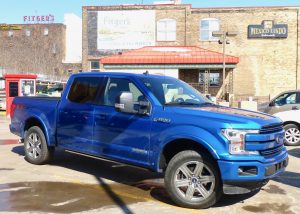
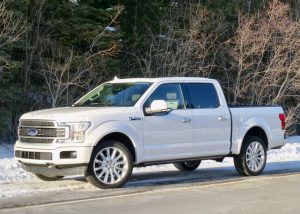
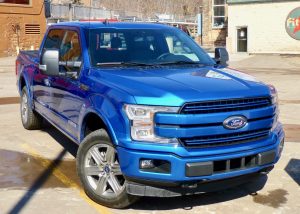
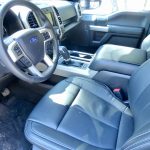
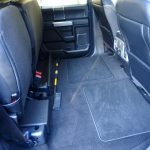
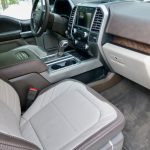
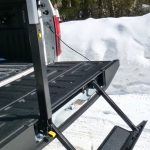
 John Gilbert is a lifetime Minnesotan and career journalist, specializing in cars and sports during and since spending 30 years at the Minneapolis Tribune, now the Star Tribune. More recently, he has continued translating the high-tech world of autos and sharing his passionate insights as a freelance writer/photographer/broadcaster. A member of the prestigious North American Car and Truck of the Year jury since 1993. John can be heard Monday-Friday from 9-11am on 610 KDAL(www.kdal610.com) on the "John Gilbert Show," and writes a column in the Duluth Reader.
John Gilbert is a lifetime Minnesotan and career journalist, specializing in cars and sports during and since spending 30 years at the Minneapolis Tribune, now the Star Tribune. More recently, he has continued translating the high-tech world of autos and sharing his passionate insights as a freelance writer/photographer/broadcaster. A member of the prestigious North American Car and Truck of the Year jury since 1993. John can be heard Monday-Friday from 9-11am on 610 KDAL(www.kdal610.com) on the "John Gilbert Show," and writes a column in the Duluth Reader.